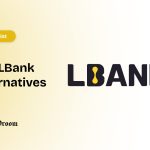With hundreds of companies setting up Bitcoin Treasuries around the globe, it’s essential to highlight all the risks, expected situations, and a few uncommon aspects of investing in Bitcoin with a Treasury Model.
In this article, we will discuss different factors that may impact a Bitcoin Treasury in the long run.
Highly Volatile Asset
Bitcoin is a highly volatile asset; the difference between its highest and lowest points in the last cycle was 77%. Bitcoin made a high of $69,000 in November 2021, followed by a low of $15,800 in Jan 2024. Soon, it crossed $100,000 in December 2024, which corresponds to an intra-year growth of 632% growth.
At the height of the bear market, Michael Saylor saw his losses cross $1 billion.
A treasury must prepare for extreme drawdowns. However, it is unlikely that another drawdown over 75% will take place in the near future due to stable investment by other Bitcoin treasuries.
No Dividends or Interest
Unlike bonds and shares, which pay interest or dividends, Bitcoin does not pay you anything till you sell it. However, other cryptocurrencies like Ethereum offer greater benefits, such as staking rewards, governance rewards, and DeFi yield farming. Bitcoin simply benefits its holders with price appreciation.
Therefore, if a treasury wishes to invest in Bitcoin, it must have a strategy to either get long-term debt and pay interest payments from other income sources or follow Michael Saylor’s model, which converts bonds into shares of the company.
100% Asset Concentration in a Bitcoin Treasury
A core rule of investing is asset diversification, which is the opposite of what a Bitcoin Treasury does. Therefore, if a company is establishing one, it must know every aspect of Bitcoin and its market dynamics, so that it can better plan for repayment and risk management, especially during bear market phases.
In the words of Warren Buffett, the Oracle of Omaha,
Therefore, it is highly essential to avoid ignorance and get as much knowledge as possible on Bitcoin before investing in a Treasury.
Cost of Borrowed Funds
Most Bitcoin Treasuries have been established on borrowed funds, which makes the cost of debt the most critical aspect of running the treasury.
If debt is cheap, a treasury will yield much higher returns, quickly. However, if the cost of funds is higher (i.e., high interest rate), the treasury might cease to exist sooner than others.
The cheapest funds are only possible in developed economies with high liquidity, like Japan (interest rates below 1% per annum). Other sources include funds directly loaned from central banks like the US Federal Reserve or the US Treasury Bills.
Equity vs Debt Finance
Strategy (formerly MicroStrategy) has used both equity (share sale) and debt (convertible bonds) to finance its Bitcoin acquisition, creating a template for others. Most treasuries have been using either model to fund their acquisitions.
The Rise of MicroStrategy: How It Became World’s Largest Corporate Bitcoin Holder
Equity sales dilute the percentage holdings of the founders but bring cash with fewer repayment liabilities. They are easy to execute but depend largely on the company’s valuation. Larger and well-known companies tend to raise more funds via this method than their smaller counterparts.
Debt-based funding brings a fixed repayment schedule but is easier for smaller companies to access. However, if debt is taken via convertible bonds (like Strategy), the repayment liabilities are far lower than vanilla debt.
Operating Leverage
Operating Leverage in the case of treasuries refers to how much the company benefits from growth in its Bitcoin acquisition. Higher Bitcoin acquisition should translate into higher yield percentages due to previous purchases being at a lower cost. This aspect is possible only when Bitcoin has been bought at lower levels or dips.
However, if acquisitions are not strategically done and are executed at arbitrary levels or FOMO periods, the rise in the quantum of Bitcoin in the treasury will yield fewer rewards.
An example of this would be a situation where the treasury buys only when Bitcoin is already in a bull trend and avoids buying when the price is in a bear market. BlackRock perfected this strategy with its initial acquisition of $2 billion worth of Bitcoin (for its ETF) in December 2023, when the price was around $16,000.
Realized Profit
Realized Profits refers to how much Bitcoin has been sold at a profit since its creation. This metric gives treasuries the right time to invest in Bitcoin and also cautions when to stop buying.
Typically, lower realized profit in Bitcoin indicates that the markets may sell Bitcoin in larger numbers, and therefore, a bear phase could be in the making. Similarly, a bullish phase is indicated by higher realized profit.
Hence, a company willing to set up a treasury should consider initiating an acquisition at a point when the realized profit is at its highest.
Investment Opportunity
For the best results in any treasury, it is essential that the cost of debt is low, and Bitcoin is in a relatively undervalued phase. When both of these situations coexist, it presents a better investment opportunity.
Opposite to this, when everyone is in an euphoric state of mind for Bitcoin, it is likely a marketwide FOMO. Such situations tend to lure new buyers and trap them at higher prices, often called a Bull Trap.
For creating profitable treasuries, it is highly essential that the acquisition is undertaken in a relatively bearish phase where the price is undervalued.
Taxation
Taxation is a necessary evil in any economy. The country’s taxation policies have a lot of impact on the success of the treasury. Higher taxation for cryptocurrencies exists in many countries, like Italy and India, where it is relatively complex to sustain a Bitcoin Treasury. In contrast, companies can perform well in countries with lower crypto taxes, such as the USA and Japan, where taxes are relatively lower.
Bitcoin vs Gold: The End of Gold’s Reign for the Next Generation?



















